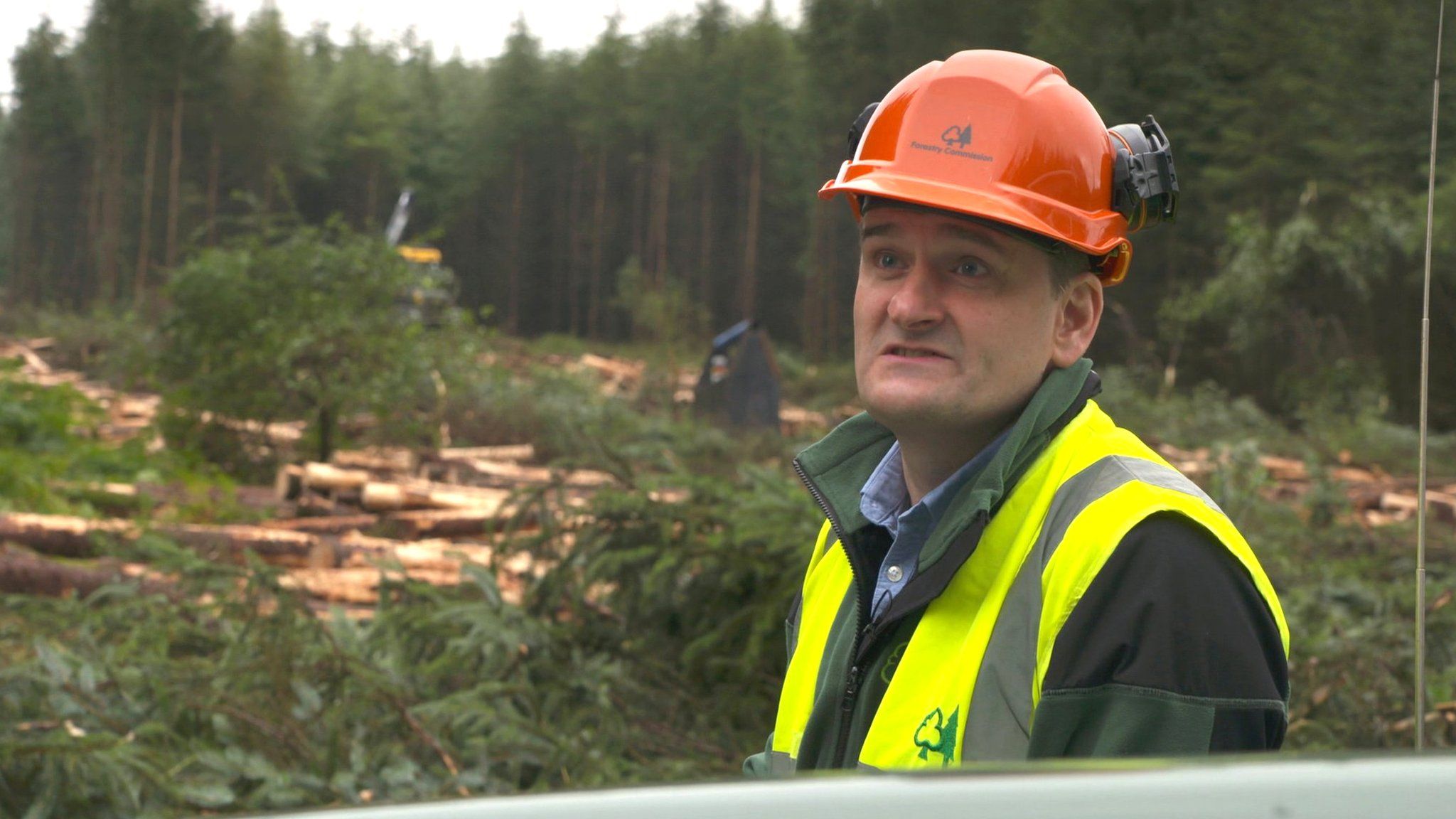The battle to save Scotland's forests from disease
- Published

"When I first saw the impact this disease was having, it really almost reduced me to tears."
The words of Scottish Forestry's John Dougan as he describes the battle to defeat the deadly tree disease Phytophthora Ramorum.
It has spread throughout Scotland in recent years, leaving thousands of dead and damaged trees in its wake.
If the ongoing fight is lost, it is feared it could be catastrophic for the forestry industry and also hit tourism.
As the busy summer holiday period approaches, members of the public are being urged to take some simple precautions which could help, such as cleaning their boots before leaving.
Changing landscape
Phytophthora Ramorum was first found in larch trees in the region in 2010.
At Ae Forest near Dumfries, its impact on the landscape is clear to see.
Slowing the progression of the disease can only be achieved by cutting trees down.
At Ae, any vulnerable species found within 250m of an infected tree will be felled.
The change is significant - both in terms of the look of the forest and the increased activity.
Mr Dougan, Scottish Forestry's head of operational development, told BBC Scotland's Landward: "It's a fungal-based disease, microscopic spores that get caught up in water droplets and vapour, and they get blown around in the atmosphere, they land on the tree and then they start to attack the tissue of the tree, and then they also reproduce themselves and the cycle continues on from there.
"It's really larch that is the engine that drives the disease progression."
He said of the felling approach: "What we're trying to do by clear-felling is removing infected trees, and reducing the risk of them then allowing the disease to reproduce itself and move onto other sites.
"The wood will go into conventional timber usage that it would have done anyway
"It does need to be handled in a specific way because obviously it potentially has infected material associated with it."
Felled early
In this particular case at Ae, trees are being felled more than 20 years before they would have normally come down.
Mr Dougan explained: "From a personal point of view - I mean I'm from this part of the world - when I first saw the impact this disease was having, it really almost reduced me to tears.
"Not for the loss of the timber - that's something we can accept - but it's the loss of the work of really generations of foresters to make these areas attractive places to come and visit and enjoy."
The public's role
Of the message to the public, he said: "Keep coming, because we want people to keep coming and to enjoy the forest.
"When you do come, when you leave think about not moving stuff from this forest to another forest or another part of the countryside.
"So if you've got mud on your equipment, your boots, your bikes, your dogs, these sorts of things, before you go somewhere else just make sure you wash that off so you're not moving the disease on to another location on another visit."
You can see this story on Landward on BBC One Scotland on Friday at 19:30.
- Published23 January 2019
- Published15 June 2018
- Published12 January 2015